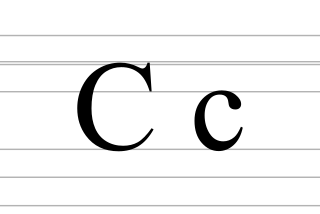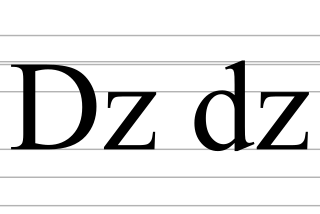
Ll/ll is a digraph that occurs in several languages.

Ll/ll is a digraph that occurs in several languages.
In English, ⟨ll⟩ often represents the same sound as single ⟨l⟩: /l/. The doubling is used to indicate that the preceding vowel is (historically) short, or that the "l" sound is to be extended longer than a single ⟨l.⟩ would provide (etymologically, in latinisms coming from a gemination). It is worth noting that different English language traditions use ⟨l⟩ and ⟨ll⟩ in different words: for example the past tense form of "travel" is spelt "travelled" in British English but "traveled" in American English. See also: American and British English spelling differences#Doubled consonants.

In Welsh, ⟨ll⟩ stands for a voiceless alveolar lateral fricative sound (IPA: [ɬ]). This sound is very common in place names in Wales because it occurs in the word llan , for example, Llanelli , where the ⟨ll⟩ appears twice, or Llanfairpwllgwyngyll , where (in the long version of the name) the ⟨ll⟩ appears five times – with two instances of llan.
In Welsh, ⟨ll⟩ is a separate digraph letter [2] from ⟨l⟩ (e.g., lwc sorts before llaw). In modern Welsh this, and other digraph letters, are written with two symbols but count as one letter. In Middle Welsh it was written with a tied ligature; this ligature is included in the Latin Extended Additional Unicode block as U+1EFAỺLATIN CAPITAL LETTER MIDDLE-WELSH LL and U+1EFBỻLATIN SMALL LETTER MIDDLE-WELSH LL. [3] This ligature is seldom used in Modern Welsh, but equivalent ligatures may be included in modern fonts, for example the three fonts commissioned by the Welsh Government in 2020. [4]

In the standard Asturian orthography published by the Academy of the Asturian Language in 1981, ⟨ll⟩ represents the phoneme /ʎ/ (palatal lateral approximant). [5]
A variation of this digraph, ⟨l-l⟩, is used to separate a verb form that ends in -l and the enclitics lu, la, lo, los or les. This is pronounced as a geminated ⟨l⟩/ll/. For example, val-lo ("it is worth it"). [5]
Another variation of this digraph, ⟨ḷḷ⟩, is used to represent a set of dialectal phonemes used in Western Asturian that correspond to /ʎ/ in other dialects: [ɖ] (voiced retroflex plosive), [ɖʐ] (voiced retroflex affricate), [ʈʂ] (voiceless retroflex affricate) or [t͡s] (voiceless alveolar affricate). This may also be written as ⟨l.l⟩ in devices that do not support the Unicode characters U+1E36ḶLATIN CAPITAL LETTER L WITH DOT BELOW and U+1E37ḷLATIN SMALL LETTER L WITH DOT BELOW. [5]
In Catalan, ⟨ll⟩ represents the phoneme /ʎ/, as in llengua (language, tongue), enllaç (linkage, connection), or coltell (knife).

In order to not confuse ⟨ll⟩/ʎ/ with a geminated ⟨l⟩/ll/, Catalan uses a middle dot (interpunct or punt volat in Catalan) in between ⟨ŀl⟩. For example excel·lent ("excellent"). The first character in the digraph, ⟨Ŀ⟩ and ⟨ŀ⟩, is included in the Latin Extended-A Unicode block at U+013F (uppercase) and U+0140 (lowercase) respectively.
In Catalan typography, ⟨l·l⟩ is intended to fill two spaces, not three, [6] so the interpunct is placed in the narrow space between the two ⟨l⟩s: ⟨ĿL⟩ and ⟨ŀl⟩. However, it is common to write ⟨L·L⟩ and ⟨l·l⟩, occupying three spaces. ⟨L.L⟩ and ⟨l.l⟩, although sometimes seen, are incorrect.
In official Galician spelling the ⟨ll⟩ combination stands for the phoneme /ʎ/ (palatal lateral approximant, a palatal counterpart of /l/).
In Spanish, ⟨ll⟩ was considered from 1754 to 2010 the fourteenth letter of the Spanish alphabet because of its representation of a palatal lateral articulation consonant phoneme (as defined by the Royal Academy of the Spanish Language). [7]
While Philippine languages like Tagalog and Ilocano write ⟨ly⟩ or ⟨li⟩ when spelling Spanish loanwords, ⟨ll⟩ still survives in proper nouns. However, the pronunciation of ⟨ll⟩ is simply [lj] rather than [ʎ]. Hence the surnames Llamzon, Llamas, Padilla, Bellen, Basallote and Villanueva are respectively pronounced [ljɐmˈzon]/[ljɐmˈson], [ˈljɐmas], [pɐˈdɪːlja], [bɪːlˈjɛːn], [bɐsɐlˈjotɛ] and [ˌbɪːljanuˈwɛːba]/[ˌvɪːljanuˈwɛːva].
Furthermore, in Ilocano ⟨ll⟩ represents a geminate alveolar lateral approximant /lː/, like in Italian.
In Albanian, ⟨L⟩ stands for the sound /l/, while ⟨Ll⟩ is pronounced as the velarized sound /ɫ/.
In Icelandic, the ⟨ll⟩ can represent [tɬ] (similar to a voiceless alveolar lateral affricate), [9] [ɬ] or [l] depending on which letters surround it. [tɬ] appears in fullur ("full", masculine), [ɬ] appears in fullt ("full", neuter), and [l] appears in fulls ("full", neuter genitive). The geographical name Eyjafjallajökull includes the [tɬ] sound twice.
In Old Icelandic, the broken L ligature appears in some instances, such as vꜹꝇum (field) and oꝇo (all). [10] It takes the form of a lowercase ⟨l⟩ with the top half shifted to the left, connected to the lower half with a thin horizontal stroke. This ligature is encoded in the Latin Extended-D Unicode block at U+A746 (uppercase) and U+A747 (lowercase), displaying as Ꝇ and ꝇ respectively.

In Central Alaskan Yupʼik and the Greenlandic language, ⟨ll⟩ stands for /ɬː/.
In the Gwoyeu Romatzyh romanization of Mandarin Chinese, final ⟨-ll⟩ indicates a falling tone on a syllable ending in /ɻ/, which is otherwise spelled ⟨-l⟩.
In Haida (Bringhurst orthography), ⟨ll⟩ is glottalized /ˀl/.
A fricative is a consonant produced by forcing air through a narrow channel made by placing two articulators close together. These may be the lower lip against the upper teeth, in the case of ; the back of the tongue against the soft palate in the case of German ; or the side of the tongue against the molars, in the case of Welsh. This turbulent airflow is called frication.
A lateral is a consonant in which the airstream proceeds along one or both of the sides of the tongue, but it is blocked by the tongue from going through the middle of the mouth. An example of a lateral consonant is the English L, as in Larry. Lateral consonants contrast with central consonants, in which the airstream flows through the center of the mouth.

Ç or ç (C-cedilla) is a Latin script letter used in the Albanian, Azerbaijani, Manx, Tatar, Turkish, Turkmen, Kurdish, Kazakh, and Romance alphabets. Romance languages that use this letter include Catalan, French, Portuguese, and Occitan, as a variant of the letter C with a cedilla. It is also occasionally used in Crimean Tatar and in Tajik to represent the sound. It is often retained in the spelling of loanwords from any of these languages in English, Basque, Dutch, Spanish and other languages using the Latin alphabet.

Pharyngealization is a secondary articulation of consonants or vowels by which the pharynx or epiglottis is constricted during the articulation of the sound.

A digraph or digram is a pair of characters used in the orthography of a language to write either a single phoneme, or a sequence of phonemes that does not correspond to the normal values of the two characters combined.
A trigraph is a group of three characters used to represent a single sound or a combination of sounds that does not correspond to the written letters combined.
When used as a diacritic mark, the term dot refers to the glyphs "combining dot above", and "combining dot below" which may be combined with some letters of the extended Latin alphabets in use in a variety of languages. Similar marks are used with other scripts.
The phonology of Catalan, a Romance language, has a certain degree of dialectal variation. Although there are two standard varieties, one based on Central Eastern dialect and another one based on South-Western or Valencian dialect, this article deals with features of all or most dialects, as well as regional pronunciation differences.

Ch is a digraph in the Latin script. It is treated as a letter of its own in the Chamorro, Old Spanish, Czech, Slovak, Igbo, Uzbek, Quechua, Ladino, Guarani, Welsh, Cornish, Breton, Ukrainian, Japanese, Latynka, and Belarusian Łacinka alphabets. Formerly ch was also considered a separate letter for collation purposes in Modern Spanish, Vietnamese, and sometimes in Polish; now the digraph ch in these languages continues to be used, but it is considered as a sequence of letters and sorted as such.

The voiceless palatal lateral fricative is a type of consonantal sound, used in a few spoken languages.
Ly is a digraph of the Latin alphabet, used in Hungarian.
In articulatory phonetics, fortition, also known as strengthening, is a consonantal change that increases the degree of stricture. It is the opposite of the more common lenition. For example, a fricative or an approximant may become a stop. Although not as typical of sound change as lenition, fortition may occur in prominent positions, such as at the beginning of a word or stressed syllable; as an effect of reducing markedness; or due to morphological leveling.

L, or l, is the twelfth letter of the Latin alphabet, used in the modern English alphabet, the alphabets of other western European languages and others worldwide. Its name in English is el, plural els.

J, or j, is the tenth letter of the Latin alphabet, used in the modern English alphabet, the alphabets of other western European languages and others worldwide. Its usual name in English is jay, with a now-uncommon variant jy.

C, or c, is the third letter of the Latin alphabet, used in the modern English alphabet, the alphabets of other western European languages and others worldwide. Its name in English is cee, plural cees.

Ḷ is a letter of the Latin alphabet, derived from L with a diacritical dot below. It is or was used in some languages to represent various sounds.

Dz is a digraph of the Latin script, consisting of the consonants D and Z. It may represent, , or, depending on the language.
Paḷḷuezu is a dialect of Asturian-Leonese, which is one of the Iberian Romance languages. It is one of eight recognized dialects of the Leonese language in the narrow sense of the designation "Leonese".